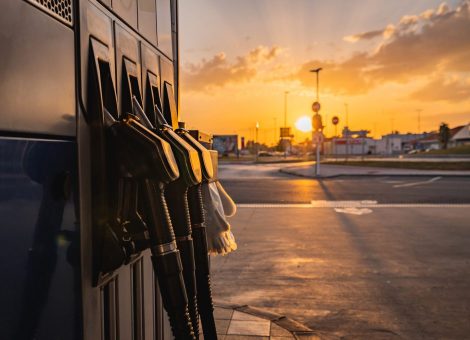The story behind the UK fuel crisis
What started the panic buying of petrol and diesel?
The panic buying started in response to media reports of a small number of petrol stations closing last week due to the fact that there weren’t enough HGV drivers available to conduct all deliveries of fuel to petrol stations.
The media picked up this report and suggested that this could eventually lead to a fuel shortage.
How much did fuel demand increase by?
Data suggests that across the UK on average, fuel demand increased by 50% – however the situation was of course extremely localised and some stations saw queues for hours and would have sold many times more than they usually do.
Why is this a problem?
50% might not sound like a lot for demand to increase by, but the problem is that fuel demand is usually very predictable, and so the supply chains follow a “Just-in-Time” principle – only delivering the fuel that is needed to a petrol station. Typically stations can expect to receive one or two deliveries of product per week, so a national increase of 50% is very significant.
As distributors are prioritising major through-roads for deliveries, this is causing pockets of high demand as of course some stations remain closed with no product.
And how much did car usage increase by?
Well this is the interesting thing…. it didn’t, it actually decreased. Two days ago – on Monday 27th September, demand was at 91% of pre-pandemic levels. The previous Monday it was at 97%, so the drop in driving time is actually quite material.
So what happens next?
Currently UK petrol storage has moved from being in refineries and the tanks below the ground in petrol stations – to within the public’s cars. With driving times static — if not lower than usual – retailers will see a drop in demand across the board throughout the next two weeks. For those more local retailers selling convenience products such as bread and milk, this is particularly challenging as they are likely to have been trading at a significant loss.
As demand picks up again however, it’s a great opportunity for retailers to consider their price position and put additional care and attention into ensuring their pricing strategy is accurately implemented.
Us Brits have a good reputation for being well prepared for significant events– you may all have heard of Operation Tower Bridge – and I’d absolutely recommend that clients invest some time into preparing for how to handle for disruptive events in their own businesses.
Read more articles about:
Fuel pricingSubscribe and get the latest updates
You may unsubscribe from our mailing list at any time. To understand how and why we process your data, please see our Privacy & Cookies Policy
Related posts
Fuel pricing
November 2025. Kalibrate's Canadian Petroleum Price Snapshot
Kalibrate conducts a daily survey of retail gasoline, diesel, propane, and furnace fuel prices in 77 Canadian cities....

Fuel pricing
October 2025. Kalibrate's Canadian Petroleum Price Snapshot
Kalibrate conducts a daily survey of retail gasoline, diesel, propane, and furnace fuel prices in 77 Canadian cities....

